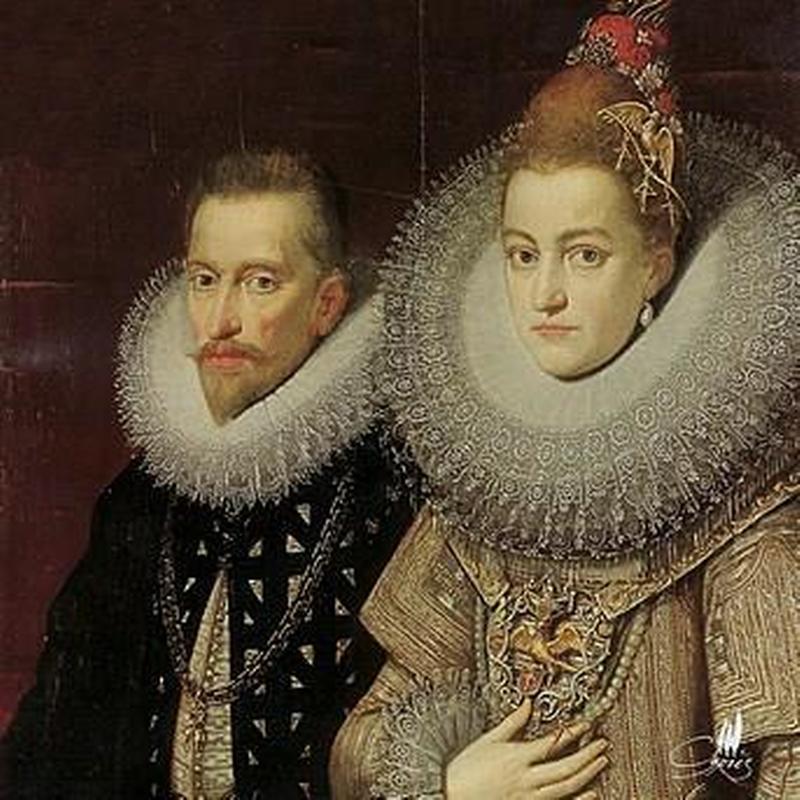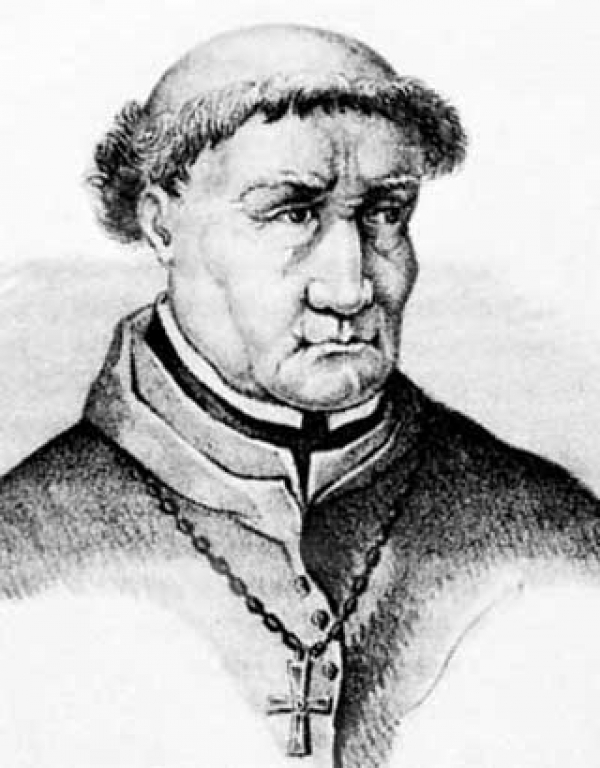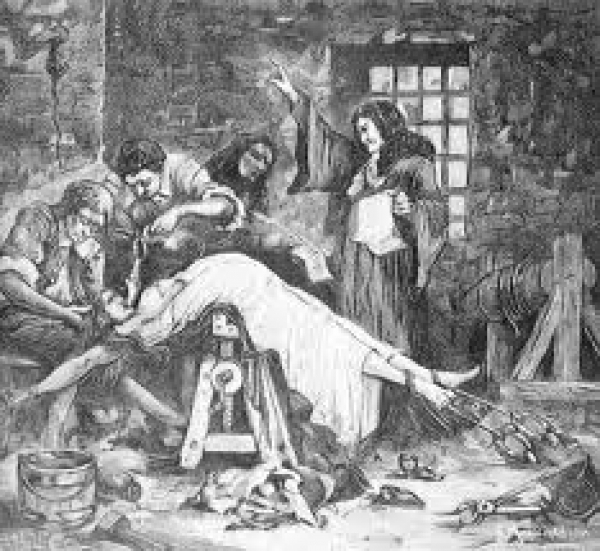Spanish Inquisition: Torquemada and Torture
Posted on 15th April 2021
The Spanish Inquisition was established by King Ferdinand of Aragon and Queen Isabella of Castile as an ecclesiastical tribunal designed to ensure religious orthodoxy in Spain. But it was always more than just a religious body becoming over time the political bulwark of the Spanish State preserving not just Sangre Limpia (Clean Blood) at home but also dictating both domestic and foreign policy.
In its zeal to root out heresy it has become a by-word for intolerance and religious fanaticism down the ages, and one man more than any other came to encompass all the evils that such intolerance is said to represent, and that man was Tomas de Torquemada.

Permission had to be sought from the Vatican for the establishment of an Inquisition and Ferdinand and Isabella approached Pope Sixtus VI declaring that one was required in Spain to guarantee the purity of the Catholic faith in their country.
Inquisitions had been established before most notably in France, but Sixtus was reluctant to confer the right on this occasion because Ferdinand and Isabella insisted upon administering it themselves. Eventually, under pressure and aware that Islam still had a presence on Spanish soil he consented, and the Holy Office of the Spanish Inquisition was established on 1 November 1478.
Tomas de Torquemada was born in 1420 to a wealthy and well-connected family and his uncle was the leading theologian Cardinal Juan de Torquemada who imbibed in his nephew the virtues of the religious life.
At an early age he entered the Dominican Order of Friars, and he was to insist all his life that he was nothing more than a humble friar toiling in the fields of the Lord, though the vast wealth that he accrued for himself over the years would appear to say otherwise. But he did turn down the offer of higher office within the Catholic Church instead choosing to be the Prior of the Monastery of Segovia and Confessor to Queen Isabella of Castile.

IIt was his connection to the Royal Court and the fact that he had been telling the Queen for many years of the need for an Inquisition saying that it would help consolidate her and Ferdinand's power that was to secure for him at the age of 63 the position of Grand Inquisitor. For a man of rigidly orthodox views and little imagination it seemed the perfect role and he threw himself into it with gusto that left those working with him breathless.
It soon became apparent that the campaign to root out heresy and religious unorthodoxy from Spain was little more than veiled anti-Semitism and the main target of the Inquisition were the Conversos, or Jews who had converted to Catholicism following the anti-Jewish pogroms of July 1391. There was a rich irony to this in that the Inquisition as a Christian body that had been created to seek out and eradicate heresy within the Catholic faith had no jurisdiction over Jews. Those Jews who had converted to Catholicism to avoid persecution were now to be persecuted for having done so.
Tomas de Torquemada was appointed Inquisitor-General of Spain on 17 October 1483 and was soon to become known as "The Hammer of the Heretics".
He was a humourless man who had little respect for rank, and it was not unknown for him to talk down to and even lambast the Queen on occasions; and though he by no means led a Spartan lifestyle he was widely believed by those who knew him to be incorruptible and he certainly wore a hair-shirt under his fine robes and had done so for many years.
Immovable in his religious orthodoxy, unsympathetic to difference and determined to root out heresy wherever it could be found, imagined or otherwise, he took his responsibilities seriously. This would be no witch hunt, no crude anti-Jewish pogrom instead it would be carried out according to the law and extensive guidelines were issued to enable people to spot those Jews who had publicly converted to Christianity but continued to practice their true faith in secret. For example, if your neighbour wears fancy clothes on a Saturday he is a Jew; if they clean their house on a Friday, they are Jews; if they light candles during the day they are Jews; if they eat unleavened bread then they are Jews and so on.
Likewise, rules for the arrest, interrogation, and trial of suspects were precisely drawn up and were to be strictly adhered to.
He did not just prosecute Jews however, it was also within his remit to root out and punish Protestants, witches, sorcerers, bigamists, adulterers and blasphemers. Sometimes the Inquisition would manufacture the crime to fit its purpose - the practice of sodomy for example was declared to have been imported by the Muslims thereby making it a heretical act.
The Inquisition employed spies known as ‘familiares’ to discover if such heretical acts were indeed occurring and they would walk the streets often at night and report back their suspicions to the Inquisition. For this they were richly rewarded and acquired an elevated status within the community which many used to intimidate their neighbours. They were hated and feared in equal measure. As indeed was Torquemada himself who was loathed by both Jews and non-Jews and assassination was a constant and genuine threat, something he was more than aware of and he was accompanied everywhere he went by a personal bodyguard of 300 men.
The Inquisition was a very formal organisation, and it enacted its inquisitorial witch-hunts with considerable pomp and great solemnity. It was, after all carrying out God's work and it operated according to the Edicts of Grace.
The Inquisition would arrive in a town invariably on a Sunday after Mass and the various heresies they sought to root out would then be explained to the various congregations. All the people would then be encouraged to present themselves before the Tribunal to relieve their consciences and they had one month with which to do so, the so-called Period of Grace.
Any resulting self-incrimination if judged genuine would lead to reconciliation between the sinner, the Church and God and only a minor punishment would ensue. However, anyone who renounced their own sins was obliged also to denounce their accomplices and to help facilitate this process these denunciations would remain anonymous. This was effectively a charter for malice and informants were never hard to come by. Many false denunciations were made for reasons of envy, greed, and hatred or all those passions that make a mockery of our humanity.

The process from accusation, to arrest, to interrogation and final condemnation was a long and complicated one. Once discovered the accused had to be denounced from the pulpit of their Church and those among the accused neighbours of good character would then be invited to inform the congregation of their heretical practices and it was only after this that any formal charges could be laid. In the meantime, the accused would have the opportunity to confess their sins but by doing so they would automatically forfeit their wealth and property.
But this long and drawn-out process could be short-circuited by the local Bishop simply declaring them heretical and having them imprisoned.
Although children under fourteen years of age did not come under the Inquisitions jurisdiction there were no barriers as to who could be put to the torture. So, children, the elderly, the infirm and pregnant women could all be legitimately tortured to force a confession.
Once formal charges had been laid the interrogations could begin and they would invariably start with some gentle questioning about the accused persons family, their children or what they did for a living before moving on to more serious matters. If this more measured approach did not elicit the required confession, then the torture could begin. The first method of torture was usually the water cure, not too dissimilar to the waterboarding we are familiar with today.

The victim of the Water Cure was often a woman as they were seen as weak and more susceptible to pain thereby more liable to make a speedy confession. She would first be stripped naked before being forced to lay upon an escalero, or ladder, where she would be fully stretched out, tightly bound and her jaws forcibly held open, her nostrils blocked, and a piece of cloth placed across her mouth. Water would then be poured upon the cloth that would then force it into the throat and so no longer able to breathe the woman would endure an experience like drowning.
Torquemada had stipulated that no more than eight litres of water could be used in any one session and throughout the procedure there would be a doctor present to observe the accused reactions and ensure that the confession when it came was made by someone who was lucid and not incoherent in any way. The confession of sin had to be pure and unadulterated by pain or fear. Also present were two clerks who were to record everything that was said and done.
Torquemada had stressed to the torturers "be cautious, circumspect and charitable" but these were rules more adhered to in the breach particularly as he had also said that the victims should, if at all possible, not die under torture. Torquemada himself attended many of these interrogations and recorded that he was satisfied with their operation.
Once the confession had been attained the process of auto-da-fe or Trial by Faith could begin. Auto-da-fe was a public execution that would invariably be held on a Sunday or during a Public Holiday to maximise attendance and it was part of a ritual that would last many hours.
The condemned would be made to wear a black hat known as a sambenito with pictures of flames and demons on it to indicate that Hell awaited them and they would then be slowly paraded around the town where they could be jeered at and abused by the people.

FFinally, they would be taken to the town square where they would be tied to a post atop a funeral pyre and the charges condemning them as heretics would be read out.
As last-minute confessions would often lead to the crowd demanding a reprieve the victim would be gagged to prevent them from responding to the priest’s constant demands that they do so. If they nodded a recantation or made to kiss the cross, they might be treated more mercifully and garrotted before the flames could consume them.
Whereas it may be a joke that no one expects the Spanish Inquisition it was true that you could not escape them. If you died before execution could take place, then your corpse would be disinterred and publicly burned. If you managed to flee before auto-da-fe could take place you would be burned in effigy.
The Inquisition did not carry out the executions themselves however, not wanting to have blood on their hands so instead prisoners once condemned were handed over to the Civil Authorities to carry out their dirty work.
The activities of the Spanish Inquisition were not well received by everyone in the Catholic Church. Even Pope Sixtus VI criticised it for: "Without observing juridical prescriptions, it has detained many persons in violations of justice, punishing them by severe tortures and imputing to them, without foundation, the crime of heresy, and despoiling of their wealth those sentenced to death".
He did nothing about it however, and his criticism cut no ice with Torquemada. He was on a mission to rid Spain of Judaism, it was a curse, and likewise he was determined to end the plague of usury that saw the Jews profit from the misery of their Christian neighbours.
Frustrated by his inability to prosecute those Jews who had not converted to Christianity and continued to openly practise their religion he worked hard to get Ferdinand and Isabella to concede to his demand to expel them from Spain altogether. Becoming aware of the threat to expel them the Jewish community in Spain offered to pay 300,000 ducats to be permitted to remain.

Upon learning that Isabella had expressed interest in the offer Torquemada stormed into her bedchamber and throwing a gold crucifix onto the ground screamed at her that Judas Escariot had betrayed Jesus for thirty pieces of silver, now she was willing to betray Our Lord for three hundred thousand ducats.
He got his way and on 31 March 1493 just three months after the last Muslim stronghold in Spain at Granada had fallen, the Alhambra Decree came into law expelling the Jewish community from Spain. The Jews were permitted to take their belongings with them but were forced to leave their money behind.
They still had the opportunity of converting to Christianity of course, but in the light of recent events few chose to do so, and more than 130,000 Jews were made to find new homes in exile.
The expulsion of the Jews from Spain was the pinnacle of Torquemada's career, but he had no intention of ceasing his activities and the Inquisition continued relentless in its prosecution of heretics. Indeed its remit and powers were extended and it could now liberally hand out punishments other than death including public whippings, servitude in the galleys and terms of imprisonment.
The Spanish Inquisition was not to be abolished until 1834 and throughout its existence it had been permitted to carry out its work unfettered by the Civil Authorities. It was and always had been a law unto itself.
Tomas de Torquemada would die peacefully in his bed in Avila in Castille in 1498 aged 78, content that his work had been done. He had been responsible for more than 2,000 executions during his tenure of the Inquisition but the apparatus of persecution and torture he had established would be responsible for the deaths of tens of thousands more.
Tagged as: Ancient & Medieval
Share this post:





